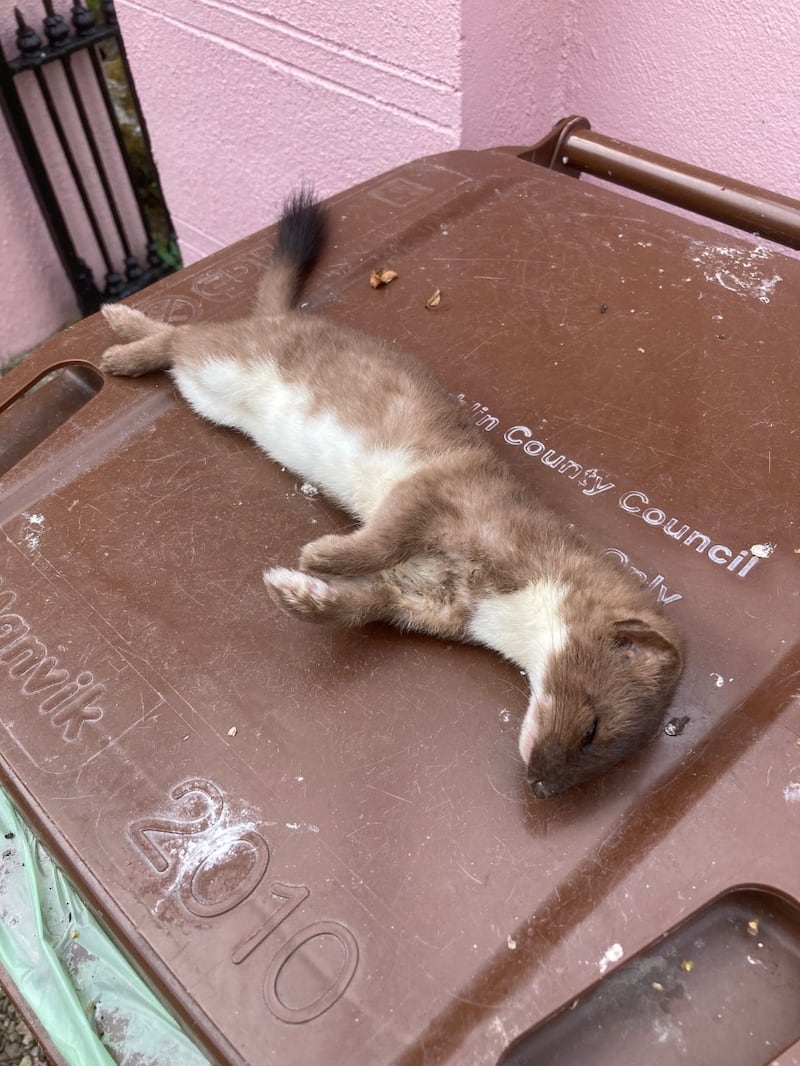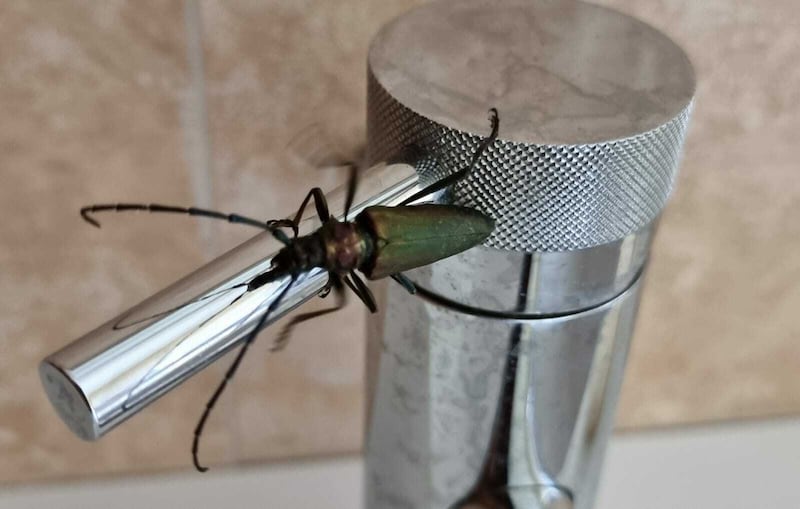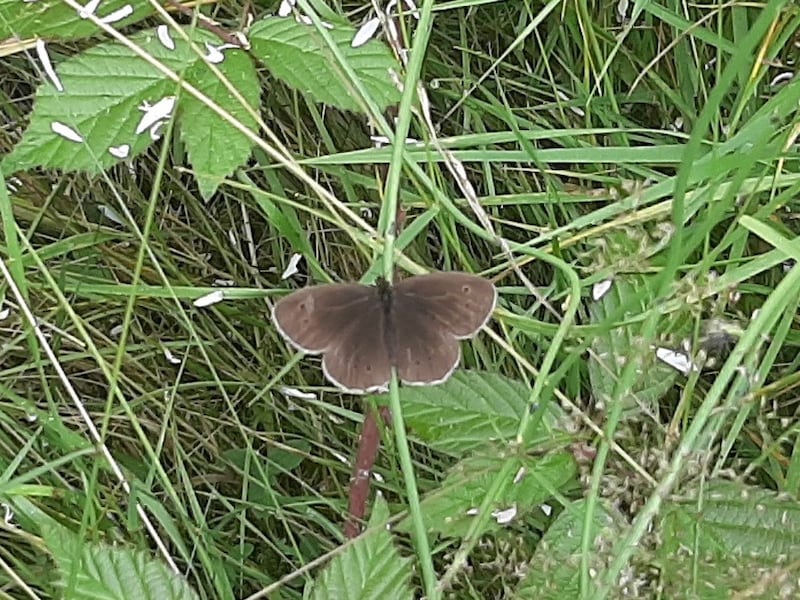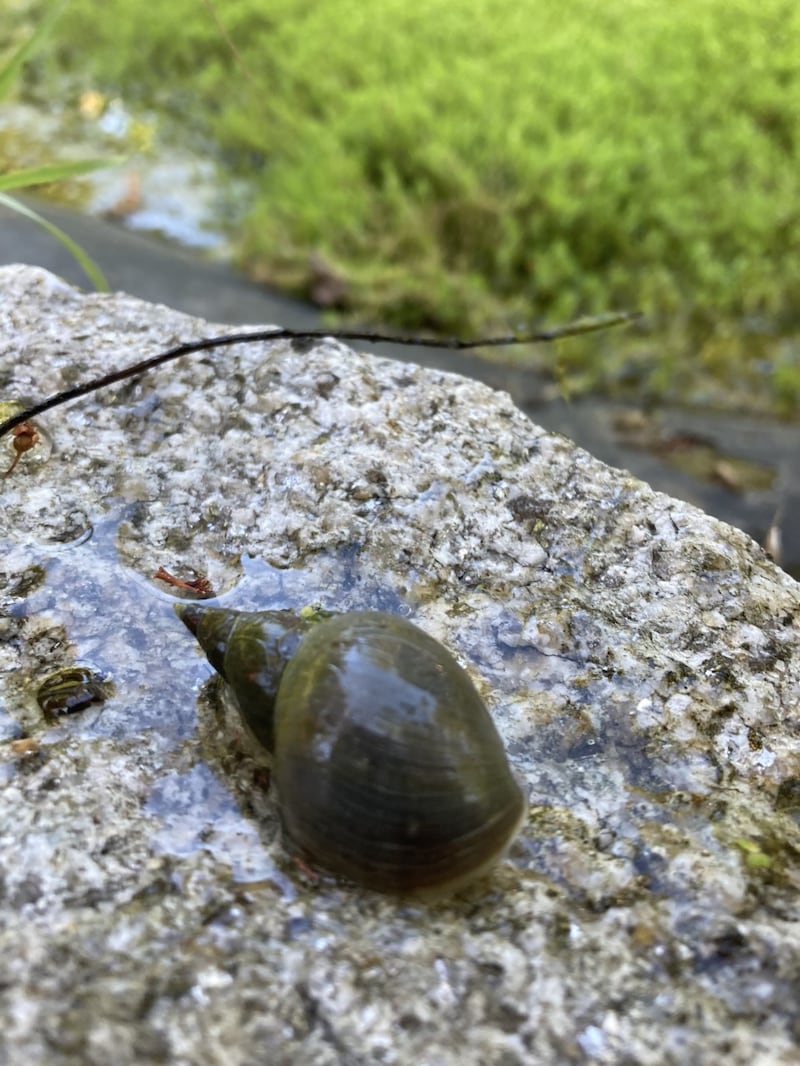This creature walked across the magazine I was reading. When I tried to lift it using an envelope, it appeared to raise its tail-end like a stinger.
– Ciaran Ryan, Dublin
It obviously wasn’t finished reading. It is the caterpillar of the vapourer moth, which feeds on a wide range of deciduous trees and orchard trees. The hairs can cause serious skin irritation if handled, so just as well you went at it with an envelope.

We found this dead body recently; we presume it’s a pine marten kit. No sign of external injury. What might have killed it?
READ MORE
– David Micks, Dublin
It is a dead stoat – the black tip on the tail is the identifying characteristic. Impossible to tell from a picture what the cause of death is; an autopsy would be needed. Stoats are top carnivores and this one may have eaten one too many rats containing rodenticide and built up a toxic dose.

What is this insect that has appeared in my garden?
– Brian Meaney, Kerry
It is a green longhorn beetle. The larvae live for three years in the wood of willow trees and the adults can be found on flowers and tree trunks.

Saw two of these beauties in our garden in July – they had gone next morning. What were they?
– Joan Mulvany, Co Cork
They were poplar hawkmoths. They do not feed as adults, but the caterpillars eat the leaves of poplars and willows.

I have been rewilding my garden; so plenty of long grass and brambles. I spotted a butterfly I have never seen before. Is it a ringlet?
– Paul Aiken, Belfast
It is indeed. Adults visit bramble flowers for nectar and the caterpillars feed on a variety of grasses, so you are doing everything right and the ringlets appreciate your efforts.

I dredged this out of my suburban pond. How might it have taken up residence?
– A McG, Dublin
It is a great pond snail, whose eggs may have been carried on the feet of visiting birds or on pond plants that you may have planted there.
Have you a nature query, observation, or photo you would like to share with The Irish Times? Submit it, with a location, via our website www.irishtimes.com/eyeonnature












